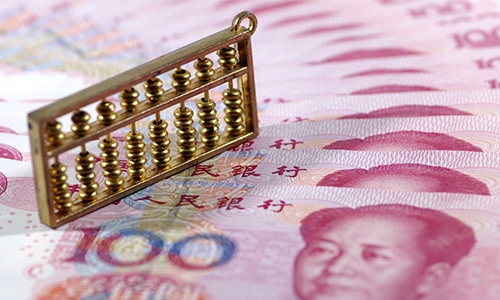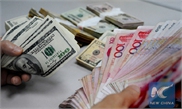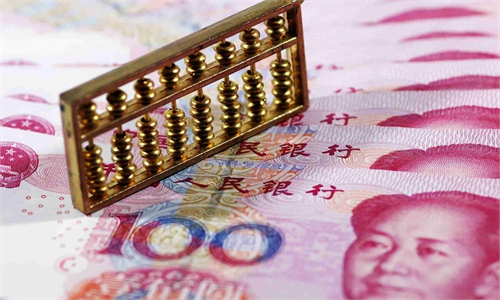SOURCE / MARKETS
Chinese yuan climbs to 29-month high against US dollar

Renminbi Photo: VCG
The Chinese yuan's recent trend of appreciation shows no signs of slowing down, as the currency's central parity rate soared to nearly 29-month high on Wednesday against the US dollar, following release of upbeat economic data in October by the Chinese statistics authority.
The yuan's reference rate against the dollar hiked by 169 basis points to 6.5593 on Wednesday, according to data released by the People's Bank of China (PBC), China's central bank. It is the highest level since June 27, 2018.
So far this year, the yuan's reference rate has surged by about 5.7 percent against the US dollar. The currency stood at 6.9614 against the greenback at the beginning of the year, according to the PBC data.
The offshore yuan also rose consecutively on Friday, Monday and Tuesday. By 10:57 am on Wednesday, the offshore yuan fell by about 0.19 percent to 6.5585 points against the US dollar.
The yuan has showed an inclination to appreciate against the US dollar since mid-2020, a phenomenonexperts have attributed to multiple factors but mostly to the two countries' economic recovery gap arising from their different handling of the COVID-19 crisis.
Lian Ping, chief economist at the Bank of Communications, said that the yuan, influenced by uncertainties in external markets, has shown a trend of appreciation amid evident two-way fluctuation. He also noted that the currency will fluctuate either way more flexibly in the future.
Lian said that the yuan's globalization will increase the demand for the yuan, and the usage of the yuan will expand in global payments and settlements.
Dong Dengxin, director of the Finance and Securities Institute at the Wuhan University of Science and Technology, said that as the yuan's exchange rate system becomes increasingly market-orientated as a result of government reforms, it can be expected that the yuan will fluctuate more freelyeither way in the future, and government intervention will dwindle.
However, if the yuan surges too fast, Dong predicted the government would still take some measures to offset the trend, such as open-market foreign reserve trading.
"I think China is capable of stabilizing the yuan within a reasonable fluctuation range, say, between 6 and 7 in the short period," he told the Global Times, adding that within such a range, influence of the yuan's fluctuation would not be too steep and intolerable for domestic exporters.
He also noted that as China's economic growth will likely speed up in the first half of next year, the yuan will maintain an "impulse" to appreciate against the greenback, though he didn't give any accurate prediction. Some other experts had forecast the yuan to surge to about 6.4 in the first half of 2021.




